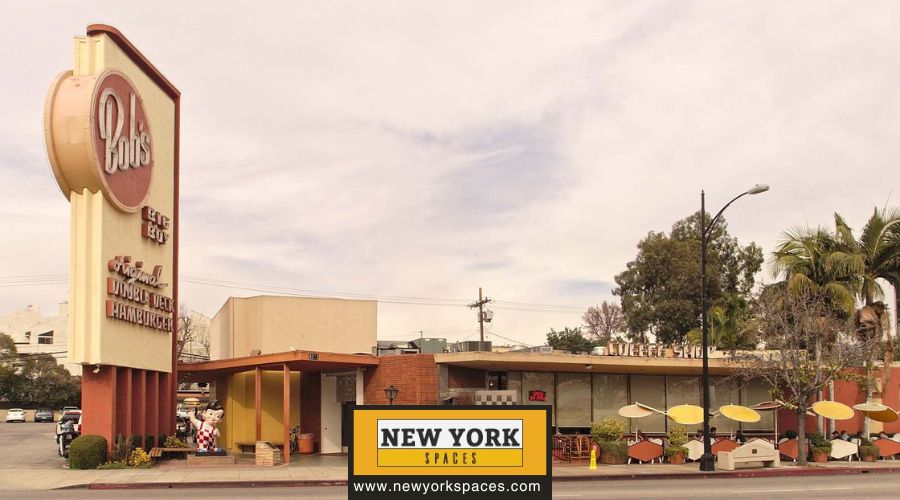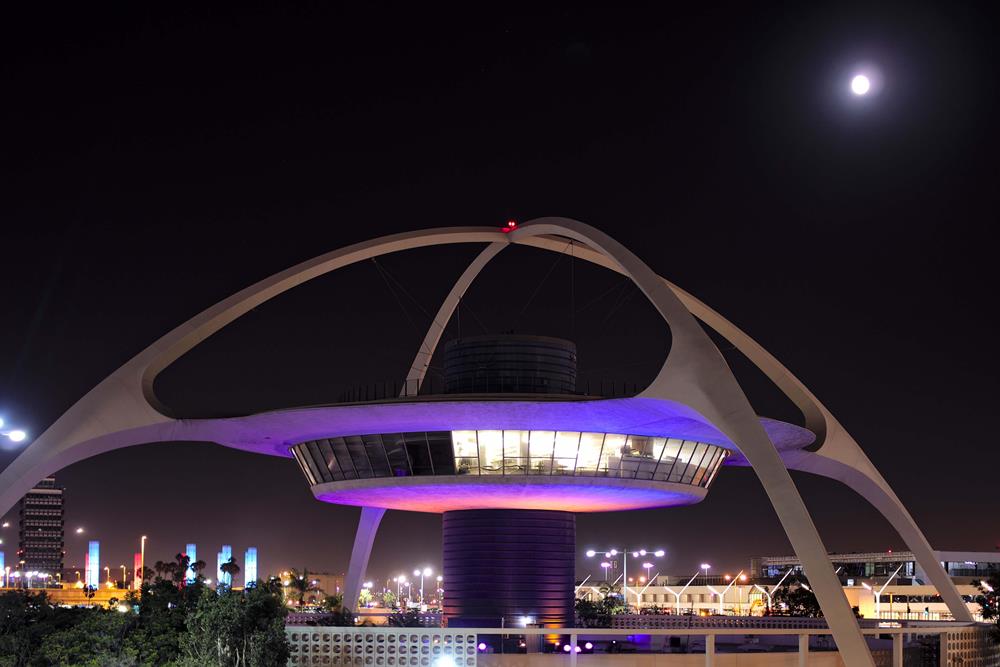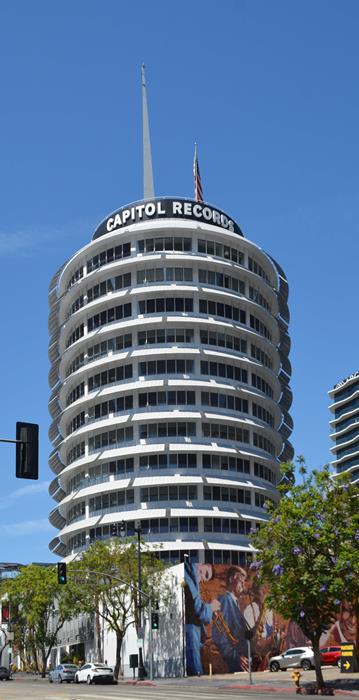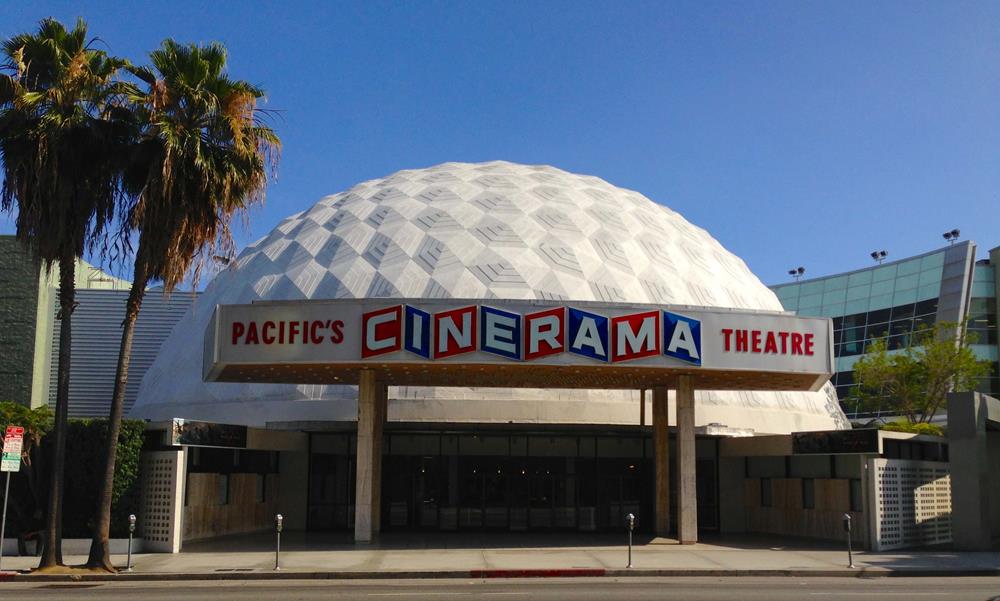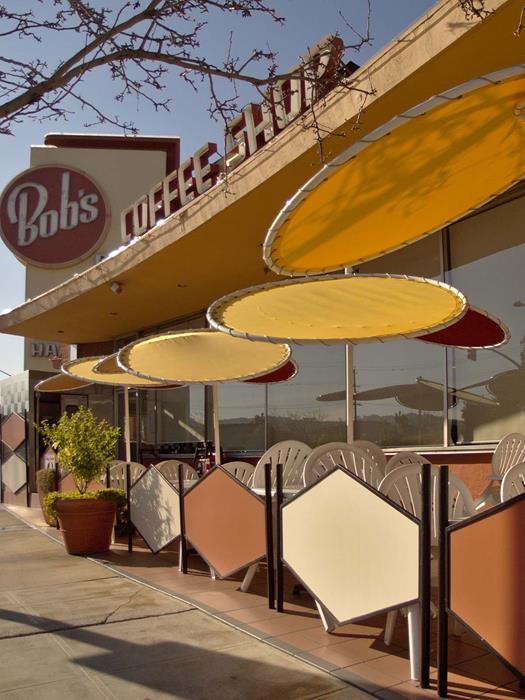Los Angeles, a sprawling metropolis famous for its cinematic landscapes and architectural wonders, holds a special place in the annals of architectural history for its unique contribution to the Googie architecture movement. This futuristic style, born in the mid-20th century, reflects America’s fascination with space, cars, and the atomic age, showcasing an optimistic vision of the future. Today, we journey through the city to explore the seven recognizable Googie buildings in Los Angeles that embody this distinctive architectural style.
The Essence of Googie Architecture
Before exploring, let’s understand what sets Googie architecture apart. Characterized by its futuristic designs, Googie architecture often features upswept roofs, neon lights, starburst patterns, and the extensive use of glass and steel. These buildings were designed to be noticed, embodying the optimism and technological prowess of the era. Originating from the design of Googie’s Coffee Shop in Los Angeles by architect John Lautner in 1949, the style quickly spread, influencing diners, motels, gas stations, and bowling alleys across the country.
The Best Googie Buildings in L.A.
1. The Theme Building at LAX
No exploration of Googie architecture in Los Angeles would be complete without mentioning the iconic Theme Building at Los Angeles International Airport (LAX). Designed by a team of prominent architects and completed in 1961, this building is a paragon of the Space Age aesthetic, with its flying saucer-like appearance and observation decks offering panoramic views of the airport and beyond. The Theme Building serves as a symbol of Los Angeles’ status as a gateway to the future.
2. Norms La Cienega Coffee Shop
Norms La Cienega is not just a diner; it’s a landmark of Googie architecture that has been serving Los Angeles since 1957. With its distinctive neon sign, angular roofline, and expansive windows, Norms represents the quintessential American diner experience, blending great food and design. This building is a testament to the era’s optimism, beckoning diners with the promise of a futuristic dining experience.
View this post on Instagram
3. The Capitol Records Building
While not a Googie structure in the traditional sense, the Capitol Records Building, completed in 1956, incorporates elements of the style in its design. Resembling a stack of records with a needle on top, this building is a nod to the era’s fascination with technology and innovation. Located in Hollywood, it serves as a reminder of Los Angeles’ impact on music, entertainment, and its architectural heritage.
4. Cinerama Dome
The Cinerama Dome opened in 1963 as part of the historic ArcLight Cinemas complex and is a marvel of engineering and design. Its geodesic Dome, made of 316 hexagons, was revolutionary, providing an immersive widescreen movie-going experience. The Dome’s futuristic look perfectly encapsulates the spirit of Googie architecture, making it a beloved landmark for cinephiles and architecture enthusiasts alike.
5. Johnie’s Coffee Shop
Originally opened in 1956 and now a designated historical landmark, Johnie’s Coffee Shop boasts a classic Googie design with its distinctive boomerang-shaped roof and neon signage. Though no longer operational as a diner, Johnie’s remains an important piece of Los Angeles’ architectural history and a popular location for film and television shoots, preserving its legacy as an icon of Googie architecture.
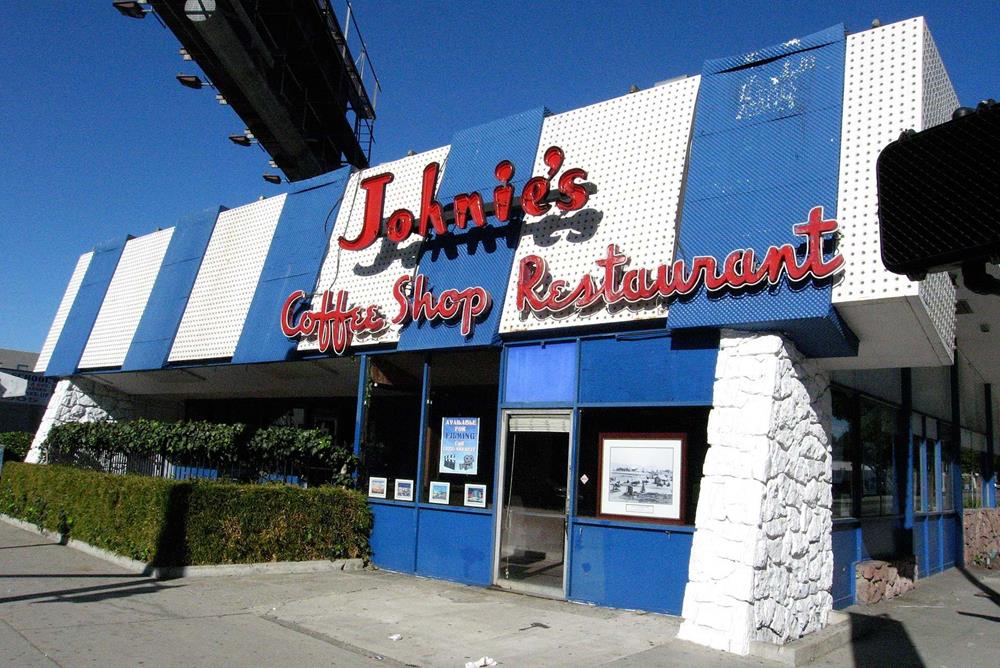
6. Pann’s Coffee Shop
Pann’s is another dining establishment featuring a stunning sign and distinctive roofing. It continues to radiate the charm of the 1950s, a credit to the renowned design duo Armet & Davis, who crafted this architectural gem. Pann’s holds a special place in the heart of Los Angeles, strategically located on the route to LAX, making it an ideal spot for a memorable welcome or a nostalgic goodbye to the city.
View this post on Instagram
7. Bob’s Big Boy in Burbank
Bob’s Big Boy in Burbank is another quintessential example of Googie architecture. Built in 1949, this diner features a towering neon sign, curvaceous architectural forms, and an iconic statue of its namesake boy holding a hamburger. As one of the oldest remaining Bob’s Big Boy locations, it serves as a living museum of mid-century modern design and a favorite spot for locals and visitors alike.
The Legacy of Googie Architecture in Los Angeles
With its bold and optimistic vision of the future, Googie architecture left an indelible mark on Los Angeles’ urban landscape. These buildings, each with a unique style and history, represent a period of unparalleled creativity and innovation in American architecture. They are not just structures but symbols of a bygone era that envisioned a future full of possibilities.
As we reflect on these seven recognizable Googie buildings in Los Angeles, it’s clear that the city’s architectural heritage is as diverse as its people. From the bustling airport to the quiet diners, Googie architecture invites us to look back at the past with nostalgia and forward to the future with hope. These buildings stand as testaments to a time when the sky was not the limit but the beginning of what could be.
In preserving and celebrating these architectural wonders, Los Angeles honors its history and inspires future generations to dream big and build boldly. The best Googie buildings in L.A. are more than just landmarks; they are a reminder that in architecture, as in life, there’s always room for innovation, imagination, and the pursuit of the extraordinary.
Conclusion
Exploring Googie architecture in Los Angeles unveils a fascinating mid-20th-century optimism, innovation, and design tableau. From the iconic Theme Building at LAX to the nostalgic charm of Norms La Cienega and the cinematic grandeur of the Cinerama Dome, each structure tells a story of a city in thrall to the future. These buildings and others, like Johnie’s Coffee Shop, Pann’s Coffee Shop and Bob’s Big Boy in Burbank, serve as enduring landmarks of a distinctive architectural style and symbols of Los Angeles’ cultural and historical identity. They remind us of a time when architecture dared to dream big, blending form and function with a playful embrace of the future. As Los Angeles continues to evolve, the legacy of its Googie architecture remains a vibrant testament to the city’s enduring fascination with the horizon of possibility, capturing the imagination of residents and visitors alike and securing its place in the annals of architectural history.

